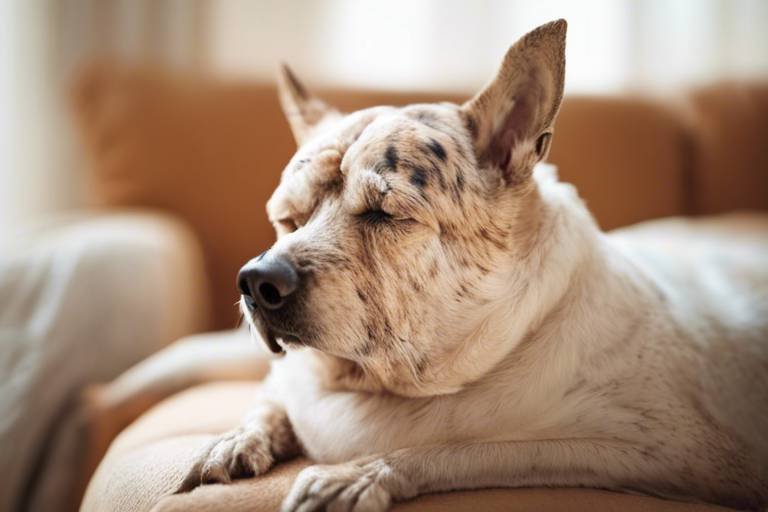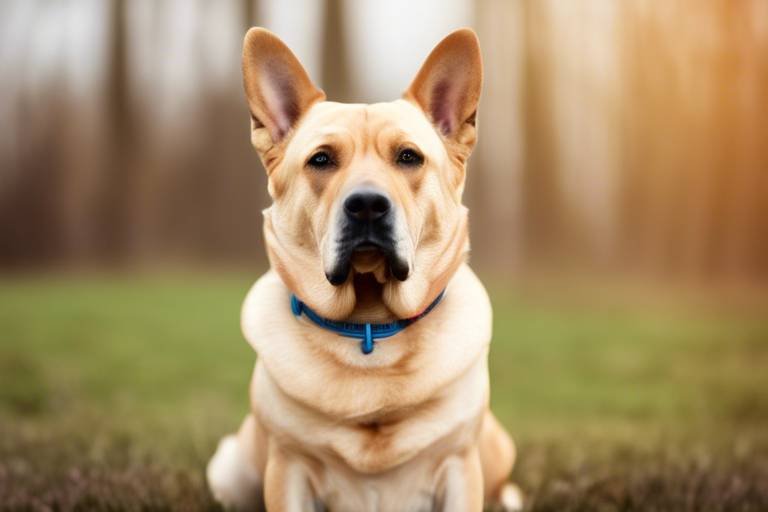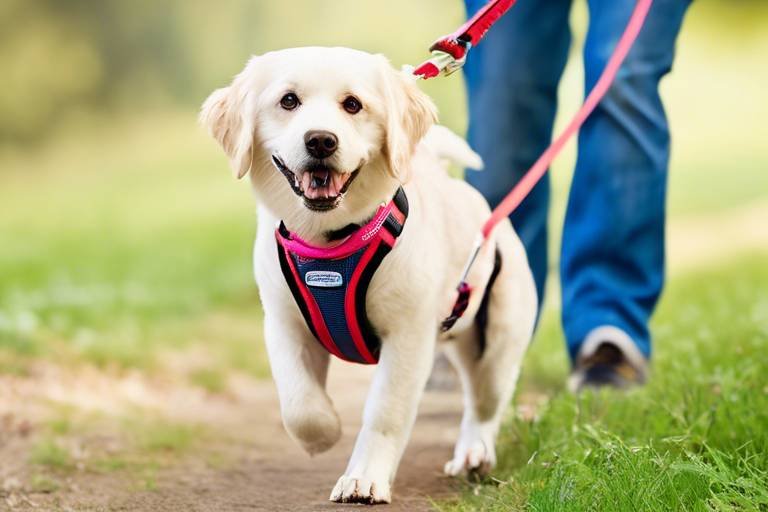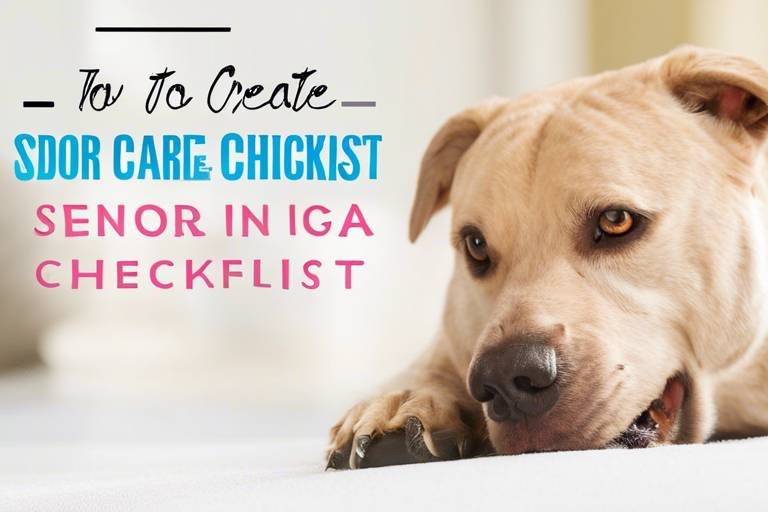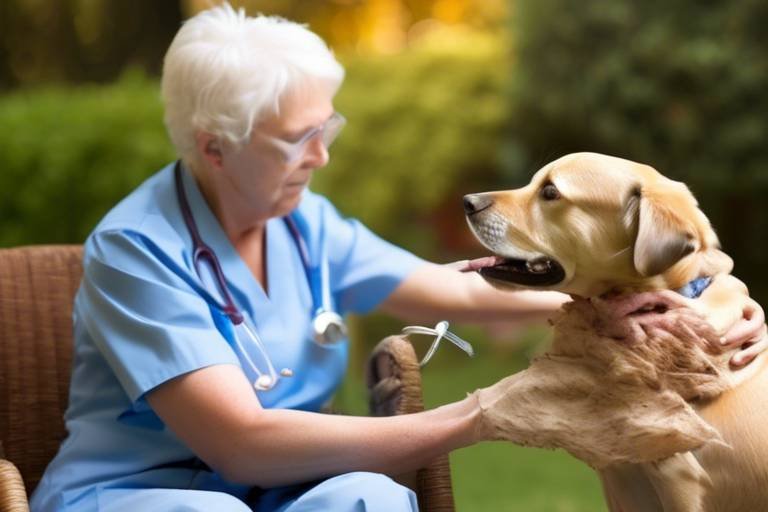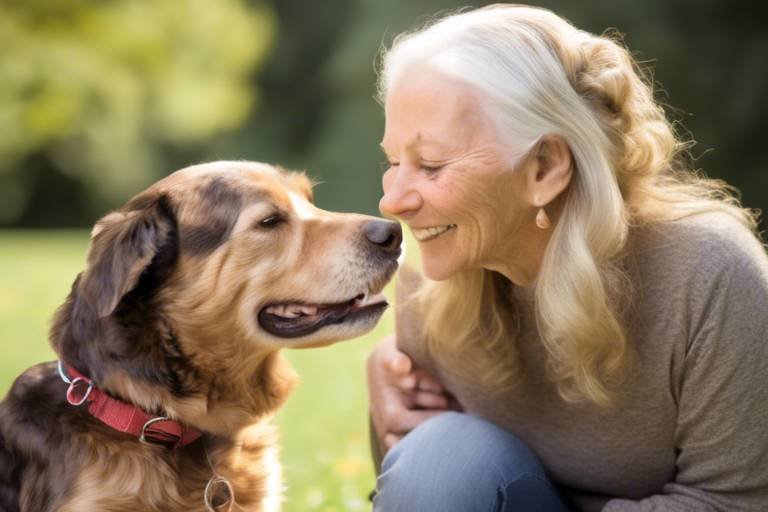The Role of Exercise in Senior Pet Health
As our beloved pets age, they deserve the best care possible, and one of the most critical aspects of that care is exercise. Just like us, senior pets experience changes in their bodies and minds as they grow older. Their energy levels may decrease, and they might not be as spry as they once were. However, incorporating regular exercise into their daily routine can significantly enhance their quality of life. Think of exercise as the magic potion that keeps their tails wagging and spirits high!
Exercise is not just about burning off energy; it’s about maintaining a healthy lifestyle. For senior pets, even gentle physical activity can lead to remarkable benefits. It helps in managing their weight, keeping their joints flexible, and even boosting their mental health. Imagine how a simple walk around the block can transform a sluggish, grumpy pet into a lively, happy companion! The importance of exercise can't be overstated, and it’s essential to tailor activities to suit their unique needs.
But what does a suitable exercise routine look like for a senior pet? It's all about finding the right balance. Activities should be low-impact and enjoyable, allowing them to stay active without overexerting themselves. This might include leisurely walks, gentle play, or even some fun training sessions that stimulate their minds. Remember, the goal is to keep them moving and engaged while ensuring they are safe and comfortable.
So, how can we ensure that our senior pets get the exercise they need? It starts with understanding their individual capabilities and health conditions. Regular vet check-ups can help identify any limitations or special considerations necessary for your pet's exercise routine. Once you have that information, you can create a personalized plan that includes a mix of activities designed to keep them fit both physically and mentally. By doing so, you’ll not only help them maintain their health but also strengthen the bond you share with them.
In conclusion, exercise plays a pivotal role in the health and happiness of our senior pets. By making it a priority, we can ensure that they enjoy their golden years to the fullest. After all, a happy pet is a healthy pet, and what could be more rewarding than seeing your furry friend thrive?
- How much exercise does my senior pet need? - The amount of exercise varies depending on the pet's size, breed, and health condition. Generally, 20-30 minutes of gentle activity a day is recommended.
- What types of exercises are best for senior pets? - Low-impact activities such as walking, swimming, and gentle play are ideal for senior pets.
- Should I consult a vet before starting an exercise routine? - Yes, it's essential to consult with a veterinarian to ensure the exercise plan is safe and suitable for your pet's health condition.
- How can I tell if my pet is overexerting themselves? - Watch for signs of fatigue, excessive panting, or reluctance to continue. If your pet shows any of these signs, it's best to stop and let them rest.

Understanding Senior Pet Needs
As pets gracefully age, their physical and mental health requirements undergo significant transformations. It's like watching a beloved friend evolve into a wise elder who needs a bit more care and attention. Understanding these needs is crucial for providing appropriate care and ensuring a healthy lifestyle for senior pets. Just like humans, our furry companions experience changes in their energy levels, joint health, and even mental sharpness as they age.
One of the most important aspects to consider is that senior pets often require specialized nutrition. Their metabolism slows down, which means they may need fewer calories but more nutrients to support their aging bodies. This shift in dietary needs can affect their weight, energy levels, and overall health. Providing a diet rich in essential vitamins and minerals can help them maintain a healthy weight and stave off age-related ailments.
Moreover, senior pets can be more prone to certain health issues such as arthritis, dental problems, and heart disease. Regular veterinary check-ups become even more critical as they age. These visits can help identify problems early on, allowing for timely interventions. It's essential to monitor their health closely and consult with a vet about any changes in behavior, appetite, or mobility, as these could be signs of underlying issues.
Additionally, just like us, senior pets thrive on mental stimulation. Their cognitive functions can begin to decline, leading to confusion or anxiety. Engaging their minds through interactive toys, puzzles, or simple training exercises can help keep their brains sharp. Think of it as a game of chess for your pet; it keeps them engaged and can even strengthen your bond.
In summary, understanding senior pet needs is about recognizing that they are in a different phase of life, requiring tailored care that addresses their unique challenges. By focusing on their nutrition, health monitoring, and mental stimulation, you can ensure that your aging furry friends enjoy their golden years to the fullest. Remember, a happy pet is a healthy pet!
- What are the common signs that my pet is aging? Look for changes in energy levels, mobility, and eating habits. Increased sleeping and decreased interest in play can also be signs of aging.
- How often should I take my senior pet to the vet? It's recommended to schedule vet visits at least twice a year for senior pets to monitor their health closely.
- Can I still exercise my senior pet? Absolutely! Tailored, low-impact exercises are beneficial. Always consult your vet for specific recommendations.

Benefits of Regular Exercise
Regular exercise is not just a luxury for our senior pets; it’s a necessity that can significantly enhance their quality of life. As our furry friends age, their bodies undergo various changes, making it crucial to incorporate physical activity into their daily routines. But why is exercise so vital? Let’s dive into the myriad benefits it offers!
First and foremost, engaging in regular physical activity helps improve mobility. Senior pets often experience stiffness and discomfort due to aging joints and muscles. By encouraging movement, we can help maintain their joint flexibility and overall mobility. Imagine how much more enjoyable a walk in the park becomes when your pet can trot along comfortably rather than struggle with each step!
Moreover, exercise plays a pivotal role in weight management. Obesity is a common concern among senior pets, leading to a host of health issues like diabetes, heart disease, and joint problems. By keeping our pets active, we can help them maintain a healthy weight. A simple daily routine of walking or gentle play can make all the difference in preventing those extra pounds from piling on.
Let’s not forget about the mental stimulation that exercise provides. Senior pets, just like us, can suffer from cognitive decline. Regular activities not only keep their bodies fit but also engage their minds. Activities like interactive play or even simple training exercises can keep their brains sharp and their spirits high. Think of it as a workout for their mind and body!
To summarize the benefits, here’s a quick overview:
| Benefit | Description |
|---|---|
| Improved Mobility | Helps maintain joint flexibility and reduces stiffness. |
| Weight Management | Prevents obesity-related health issues. |
| Mental Stimulation | Engages the mind, preventing cognitive decline. |
In conclusion, regular exercise is a key ingredient in the recipe for a happy, healthy senior pet. It’s not just about keeping them fit; it’s about enhancing their overall well-being and happiness. So, let’s lace up our shoes, grab that leash, and make exercise a delightful part of our senior pets’ daily lives!
As we wrap up our discussion on the benefits of regular exercise for senior pets, you may still have some questions. Here are a few frequently asked questions that might help clear things up:
- How much exercise does my senior pet need? - Generally, 20-30 minutes of light exercise daily is a good starting point, but this can vary based on your pet's health and breed.
- What types of exercise are best for senior pets? - Low-impact activities like walking, swimming, or gentle play are ideal.
- Should I consult a vet before starting an exercise routine? - Yes, it’s always best to consult your veterinarian to tailor a safe exercise plan for your pet.
Physical Health Improvements
Engaging in regular physical activity is like giving your senior pet a new lease on life. Just like us, as pets age, their bodies start to slow down, and they may not be as sprightly as they once were. However, incorporating exercise into their daily routine can work wonders for their physical health. Think of it as a gentle tune-up for their bodies, helping to maintain essential functions and improve their overall quality of life.
One of the most significant benefits of exercise for senior pets is the maintenance of muscle tone. As pets grow older, they naturally lose muscle mass, which can lead to weakness and decreased mobility. Regular exercise helps to counteract this decline by keeping those muscles engaged and strong. Imagine a well-oiled machine; it runs smoothly when all parts are in good condition. Similarly, a pet with strong muscles is better equipped to navigate their world, play, and even simply get up from a resting position.
Another crucial aspect of physical health improvements through exercise is joint flexibility. Aging pets often experience stiffness and discomfort in their joints, which can severely limit their activity levels. Low-impact exercises, such as walking or swimming, can help to keep the joints lubricated and flexible. Picture a rusty hinge; with a little oil and movement, it can swing smoothly once again. In the same way, gentle exercise can alleviate stiffness, making it easier for your pet to move around comfortably.
Additionally, cardiovascular health is paramount for senior pets. Regular exercise boosts their heart rate and promotes better circulation, which can help prevent heart disease and other serious conditions. Just like a garden that thrives with regular watering and care, a pet's heart benefits from consistent activity. A healthy heart means more energy and a better ability to enjoy life.
To illustrate the benefits of exercise for senior pets, consider the following table:
| Benefit | Description |
|---|---|
| Muscle Tone | Helps maintain and build muscle mass, improving overall strength. |
| Joint Flexibility | Enhances joint movement, reducing stiffness and discomfort. |
| Cardiovascular Health | Promotes heart health and better circulation, preventing diseases. |
In summary, the importance of physical health improvements through exercise cannot be overstated. By incorporating regular, low-impact activities into your senior pet's routine, you can help them maintain their muscle tone, improve joint flexibility, and enhance cardiovascular health. This not only keeps them active but also contributes to a happier, healthier life. So, let’s lace up those walking shoes and get moving—your senior pet will thank you for it!
- How much exercise does a senior pet need? Generally, 20-30 minutes of low-impact exercise a day is beneficial, but always consult your vet for personalized recommendations.
- What types of exercises are best for senior pets? Low-impact activities like walking, swimming, and gentle play are ideal for senior pets.
- How can I tell if my senior pet is overexerting themselves? Watch for signs of fatigue, excessive panting, or reluctance to continue; if you notice these, it’s time to take a break.
Weight Management Strategies
Maintaining a healthy weight is crucial for senior pets, as it directly influences their overall health and quality of life. As pets age, their metabolism slows down, and they may become less active, making it easier for them to gain weight. This is where effective come into play. The first step in managing your senior pet's weight is to monitor their diet closely. Feeding them high-quality, age-appropriate food that is lower in calories but rich in essential nutrients can help keep their weight in check. It's important to discuss with your veterinarian the best diet plan tailored to your pet’s specific needs.
In addition to diet, incorporating regular exercise into their routine is essential. Exercise not only helps burn calories but also strengthens muscles and improves joint health. Aim for at least 30 minutes of moderate exercise daily, which can be broken down into shorter sessions if needed. Here are some effective strategies to consider:
- Portion Control: Measure your pet's food to avoid overfeeding. Use a measuring cup to ensure you’re providing the right amount based on their weight and activity level.
- Healthy Treats: Choose low-calorie treats or fruits and vegetables like carrots or green beans instead of commercial snacks, which often contain hidden calories.
- Regular Weigh-Ins: Weigh your pet regularly to track their progress. Keeping a log can help identify trends and adjust their diet and exercise as necessary.
Moreover, it’s essential to create a routine that combines both diet and exercise. For example, you might decide to take a short walk after meals, which not only aids digestion but also helps with weight management. Remember, the key is consistency; making small, gradual changes can lead to significant results over time.
Lastly, be patient and encouraging. Weight loss in senior pets can take time, and it’s important to celebrate small victories along the way. By implementing these strategies, you can help your furry friend maintain a healthy weight, thus enhancing their vitality and ensuring they enjoy their golden years to the fullest.
Q: How much exercise does my senior pet need?
A: Most senior pets benefit from at least 30 minutes of moderate exercise daily, but this can be adjusted based on their individual health and energy levels.
Q: Can I use treats during training or playtime?
A: Yes, but opt for low-calorie treats or healthy alternatives like fruits and vegetables to avoid excess calorie intake.
Q: What should I do if my pet is overweight?
A: Consult your veterinarian for a tailored weight loss plan that includes dietary changes and a suitable exercise routine.
Q: Are there specific foods I should avoid for senior pets?
A: Avoid foods high in fillers, artificial ingredients, and excessive calories. Focus on high-quality, nutrient-dense options instead.
Joint Health and Mobility
As our beloved pets grow older, their joints can become stiff and painful, much like how we sometimes feel after a long day. This discomfort can hinder their ability to enjoy life fully, affecting their mobility and overall happiness. Regular exercise plays a pivotal role in maintaining joint health and enhancing mobility in senior pets. It’s not just about keeping them active; it’s about ensuring they can move comfortably and enjoy their surroundings.
Engaging in gentle, low-impact exercises can significantly improve joint function and flexibility. Think of it as a daily dose of medicine, but instead of pills, it’s a leisurely stroll or a fun game of fetch. These activities help to lubricate the joints, reducing stiffness and pain. Additionally, consistent movement strengthens the surrounding muscles, providing better support for the joints and reducing the risk of injuries.
To illustrate the impact of exercise on joint health, consider the following benefits:
- Increased Lubrication: Regular movement encourages the production of synovial fluid, which acts as a lubricant for the joints.
- Strengthened Muscles: Stronger muscles around the joints can alleviate pressure and provide better stability.
- Improved Range of Motion: Gentle stretching and movement can enhance flexibility, allowing pets to move more freely.
Moreover, it’s essential to tailor the exercise routine to each pet’s specific needs. Some pets may require more gentle activities, while others might enjoy a brisk walk. Always observe your pet's reactions during exercise; if they seem uncomfortable or in pain, it might be time to adjust the routine. Remember, the goal is to keep them happy and healthy!
Incorporating joint-friendly exercises into your senior pet's daily routine can make a world of difference. For example, swimming is an excellent option since it provides a full-body workout without putting stress on the joints. Similarly, short walks on soft surfaces, like grass, can be easier on their joints compared to harder surfaces like concrete.
Ultimately, promoting joint health and mobility in senior pets is about balance. It's a mix of engaging them in enjoyable activities while being mindful of their limitations. By doing so, we can help our furry companions enjoy their golden years to the fullest, ensuring they remain active, agile, and most importantly, happy.
Q: How often should I exercise my senior pet?
A: Aim for short sessions of 10-15 minutes, 2-3 times a day. Adjust based on your pet’s energy levels and health conditions.
Q: What types of exercises are best for senior pets?
A: Low-impact activities like walking, swimming, and gentle play are ideal. Always consult your vet before starting a new routine.
Q: How can I tell if my pet is in pain during exercise?
A: Watch for signs like limping, reluctance to move, or vocalizing discomfort. If you notice any of these, stop the activity and consult your vet.
Q: Can diet affect my pet's joint health?
A: Absolutely! A balanced diet rich in omega-3 fatty acids can help reduce inflammation and support joint health.
Mental Stimulation Through Activity
Just like us, our furry friends need a little brain workout to keep their minds sharp, especially as they age. Engaging in regular exercise not only keeps their bodies fit but also plays a crucial role in providing mental stimulation. Think of it this way: if exercise is the gym for their bodies, then interactive play is the crossword puzzle for their minds! When senior pets engage in activities that challenge their mental faculties, they experience a range of benefits that contribute to their overall happiness and well-being.
One of the most effective ways to provide mental stimulation is through interactive play. This can include activities like gentle tug-of-war, fetch, or even hide-and-seek with their favorite toys. Such games not only promote physical activity but also encourage problem-solving skills. For instance, when a dog has to figure out how to retrieve a toy that's been hidden, it's essentially a mini mental workout. Similarly, cats can benefit from chasing feather toys or engaging with puzzle feeders that require them to think and strategize to get their treats.
Moreover, incorporating variety into their playtime can keep things fresh and exciting. Just like we wouldn’t want to eat the same meal every day, pets appreciate a little diversity in their activities. Here are some ideas to mix things up:
- Obstacle courses: Set up a simple course using household items to encourage your pet to navigate through it, stimulating both their mind and body.
- Training sessions: Teach new tricks or reinforce old ones. This not only keeps their minds engaged but also strengthens the bond between you and your pet.
- Interactive toys: Invest in toys that require your pet to solve puzzles or manipulate objects to get treats. These toys can keep them entertained for hours.
In addition to play, socialization is another vital aspect of mental stimulation. Allowing your senior pet to interact with other animals or people can provide new experiences that keep their minds active. Whether it’s a visit to a pet-friendly park or a playdate with another pet, these interactions can help stave off feelings of loneliness and boredom, which are common in older pets.
Ultimately, the key to ensuring your senior pet remains mentally stimulated is to pay attention to their preferences and needs. Every pet is unique, and what excites one may not interest another. By observing their reactions and adapting activities accordingly, you can create a fulfilling routine that keeps their minds sharp and spirits high.
Q: How much exercise does my senior pet need?
A: The amount of exercise varies by breed and individual health. Generally, short walks or play sessions of 15-30 minutes a day can be beneficial. Always consult your veterinarian for personalized recommendations.
Q: Are there specific activities I should avoid with senior pets?
A: Yes, avoid high-impact activities like running on hard surfaces or jumping. Instead, focus on low-impact exercises such as walking or swimming, which are easier on their joints.
Q: How can I tell if my pet is overexerting themselves?
A: Watch for signs of fatigue such as heavy panting, reluctance to continue, or limping. If any of these occur, it’s best to stop the activity and allow your pet to rest.
Q: Can mental stimulation really help with cognitive decline?
A: Absolutely! Engaging your pet in mentally stimulating activities can help slow cognitive decline and keep their minds sharp, much like how puzzles and games benefit humans.

Recommended Activities for Senior Pets
Choosing the right activities for senior pets is not just about keeping them active; it's about ensuring they enjoy their golden years to the fullest. As our furry companions age, their energy levels may decline, but that doesn't mean they should miss out on the joy of movement and play. In fact, engaging in appropriate exercises can significantly enhance their quality of life. It’s essential to select activities that are both low-impact and tailored to their specific health conditions and preferences. This way, we can ensure that our pets remain safe, healthy, and happy.
One of the simplest yet most effective exercises for senior pets is walking. A leisurely stroll around the neighborhood or a gentle walk in the park allows them to explore their surroundings at a comfortable pace. This not only helps maintain their physical fitness but also provides mental stimulation as they encounter new sights and smells. It’s like a little adventure every day! For those pets that may need a bit more encouragement, consider incorporating light jogging into their routine, but always keep an eye on their comfort level.
Another fantastic way to keep senior pets engaged is through interactive playtime. Activities like gentle tug-of-war or a soft game of fetch can stimulate both their bodies and minds. These games not only promote physical activity but also foster a deeper bond between pet and owner. Imagine the joy on your pet’s face as they chase after a favorite toy or tug at a rope with you! It's those little moments that matter the most.
It’s also worth mentioning the importance of mental stimulation through variety in activities. Just like us, pets can get bored with the same routine. Incorporating different types of exercises, such as puzzle toys or scent games, can keep their minds sharp and engaged. For instance, hide a treat in a puzzle toy and watch as your senior pet figures out how to get to it. It’s like a mini brain workout!
Lastly, always remember to listen to your pet’s body. If they seem tired or reluctant to participate, it might be time to slow things down. The goal is to keep them moving, but not at the expense of their comfort. A well-balanced mix of walking, interactive play, and occasional new activities can keep your senior pet both physically and mentally fit, ensuring they enjoy their twilight years with joy and vigor.
- How much exercise does a senior pet need?
Generally, senior pets benefit from shorter, more frequent exercise sessions rather than long, strenuous workouts. Aim for about 20-30 minutes of activity each day, adjusting based on your pet's health and energy levels.
- What types of activities are best for senior pets?
Low-impact activities such as walking, swimming, and gentle play are ideal. Always consider your pet's specific health conditions and consult with your veterinarian for tailored recommendations.
- How can I tell if my pet is overexerting themselves?
Watch for signs of fatigue, such as heavy panting, reluctance to continue, or limping. If your pet shows any of these signs, it's best to stop the activity and allow them to rest.
Walking and Light Jogging
When it comes to exercise for senior pets, walking and light jogging stand out as two of the most effective and enjoyable activities. These forms of exercise not only help maintain a healthy weight but also promote cardiovascular health and muscle tone. Imagine your furry friend, tail wagging, as they explore the world around them at their own pace. It's not just exercise; it's an adventure!
Walking is a natural and instinctive activity for dogs and even some cats. It allows them to engage with their environment, sniffing around and discovering new scents. This sensory experience is vital, especially for senior pets who may not have the same energy levels as they once did. When you take your pet for a walk, you’re not only providing them with physical exercise but also a chance to stimulate their mind. A leisurely stroll can be a great way for them to socialize with other pets and humans, too, which is essential for their mental well-being.
Light jogging can also be beneficial, but it’s important to tailor this activity to your pet's individual capabilities. If your senior pet is up for it, a gentle jog can help build stamina and maintain muscle strength. However, always keep an eye on their breathing and energy levels. If you notice them lagging behind or panting excessively, it might be time to slow down or take a break. Remember, the goal is to keep the experience enjoyable and stress-free.
Here are some tips to consider when incorporating walking and light jogging into your senior pet's routine:
- Start Slow: Begin with short walks and gradually increase the distance as your pet becomes more comfortable.
- Choose the Right Time: Early mornings or late evenings are ideal for walks to avoid the heat of the day.
- Use Proper Gear: A comfortable harness or collar and a sturdy leash can make walks safer and more enjoyable.
- Stay Hydrated: Bring water for both you and your pet, especially on warmer days.
- Listen to Your Pet: Pay attention to their cues. If they seem tired or disinterested, it’s perfectly fine to cut the walk short.
In conclusion, walking and light jogging can significantly enhance the quality of life for senior pets. These activities not only keep them physically fit but also provide essential mental stimulation. So, grab that leash, step outside, and embark on a journey of health and happiness with your beloved companion!
1. How often should I walk my senior pet?
It's generally recommended to walk your senior pet at least 3-5 times a week, but the frequency can depend on their health and energy levels. Always adjust based on their comfort.
2. What should I do if my pet shows signs of fatigue during a walk?
If your pet seems fatigued, stop the activity and allow them to rest. It's essential to listen to their body and not push them beyond their limits.
3. Can I use a dog stroller for my senior pet?
Absolutely! A dog stroller can be a great option for senior pets who may struggle with long walks. It allows them to enjoy the outdoors while resting when needed.
4. Are there any specific breeds that require more exercise as seniors?
Some breeds, like retrievers or terriers, may have higher energy levels even as seniors. It's important to tailor exercise to each pet's needs, regardless of breed.
5. Should I consult a vet before starting an exercise routine with my senior pet?
Yes, consulting a veterinarian is crucial to ensure that your pet is healthy enough for exercise and to get personalized recommendations based on their health status.
Interactive Playtime
When it comes to keeping our senior pets engaged and active, is a game changer! Unlike traditional exercise that might feel monotonous, interactive play offers a dynamic way to stimulate both the body and mind of your furry friend. Imagine a gentle game of tug-of-war or a leisurely fetch session in the backyard—these activities not only keep them moving but also strengthen the bond between you and your pet. It's like a dance where both partners learn to read each other's moves, creating a rhythm of joy and companionship.
Engaging in interactive playtime can be tailored to your pet's unique needs. For instance, if your senior dog has limited mobility, you might opt for a soft toy that they can gently tug on without requiring too much energy. On the other hand, if they are still sprightly, a light game of fetch with a soft ball can be exhilarating. Here are some ideas for interactive playtime:
- Tug-of-War: Use a soft rope toy and let your pet pull while you gently resist. This not only exercises their muscles but also stimulates their natural instincts.
- Fetch: A classic! Use a lightweight ball or frisbee. Just remember to keep the throws short and sweet to avoid overexertion.
- Hide and Seek: Hide treats or toys around the house and encourage your pet to find them. This taps into their natural hunting instincts and keeps their mind sharp.
- Obstacle Courses: Set up a simple course using pillows or low furniture. Guide your pet through it at their pace, which can be a fun challenge!
Interactive playtime isn’t just about physical activity; it’s a fantastic way to boost your pet's mood and prevent feelings of loneliness or boredom. Just like humans, pets thrive on social interaction and mental challenges. Think of it as a mini workout session for their brains! Incorporating a variety of games can keep things fresh and exciting, preventing any feelings of monotony. You might even notice that your senior pet becomes more playful and energetic as they engage in these activities.
However, it’s essential to pay attention to your pet’s cues. If they seem tired or disinterested, it’s important to respect their limits. Just like us, senior pets have their good days and their not-so-good days. The goal is to create a fun and enjoyable atmosphere where both you and your pet can share moments of joy and connection. So, grab those toys, get down on the floor, and let the fun begin!
Here are some common questions pet owners have regarding interactive playtime for senior pets:
- How long should interactive playtime last? Generally, 15 to 30 minutes is sufficient, but always tailor it to your pet's energy levels and health.
- Can interactive play help with behavioral issues? Yes, engaging your pet in play can reduce anxiety and destructive behaviors by providing them with mental stimulation.
- What types of toys are best for senior pets? Look for soft, lightweight toys that are easy to carry and gentle on their teeth and joints.
- How can I tell if my pet is enjoying the playtime? Signs of enjoyment include wagging tails, playful barks, and a willingness to engage. If they seem disinterested or tired, it's time to take a break.
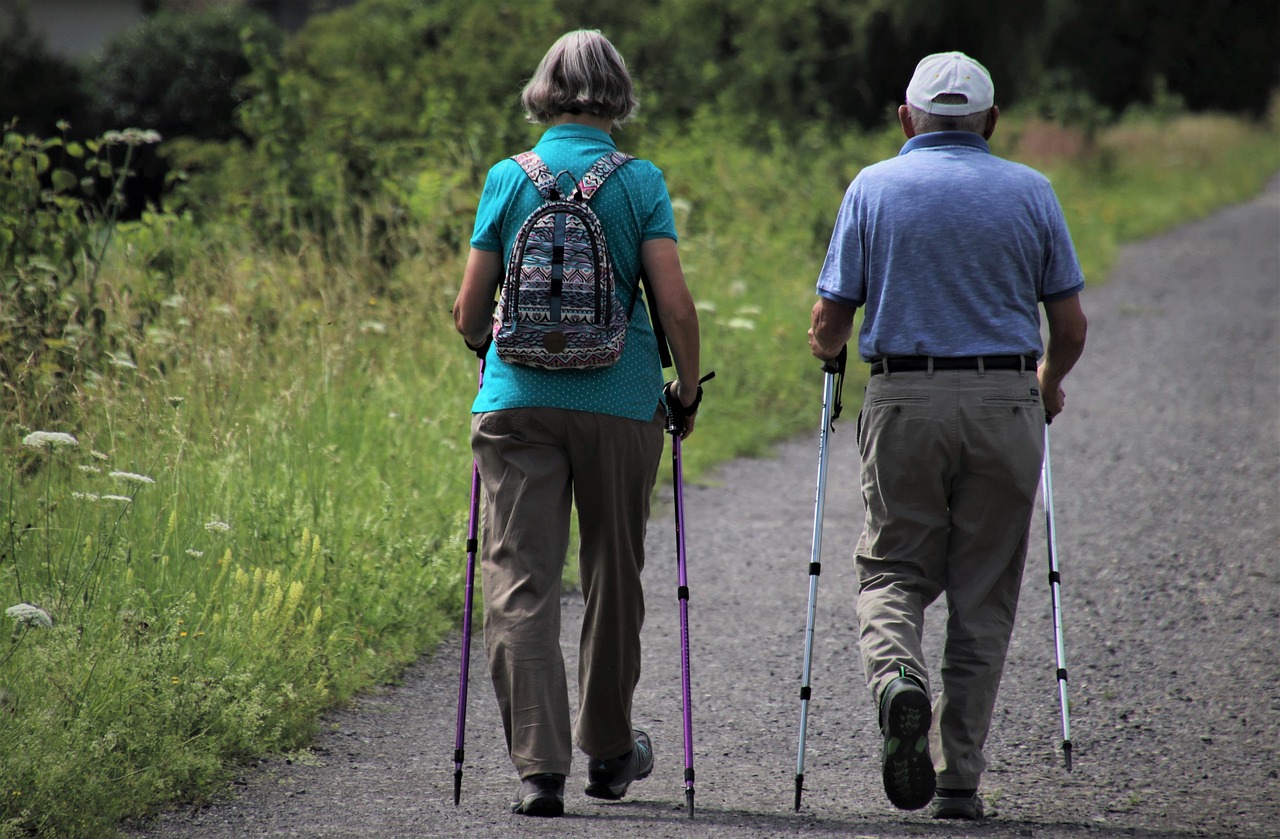
Safety Tips for Exercising Senior Pets
Ensuring the safety of senior pets during exercise is paramount. As our furry companions age, they become more susceptible to injuries and health complications, making it essential to take a few precautions. First and foremost, it's crucial to monitor your pet's health conditions. Before embarking on any new exercise routine, consulting a veterinarian is a wise step. They can provide insights into any existing health issues that could affect your pet’s ability to engage in physical activity. For instance, if your pet suffers from arthritis or heart conditions, your vet can recommend suitable exercises that won’t put too much strain on their body.
Another important aspect is choosing the right environment for exercise. When selecting a place for your pet's activities, consider factors such as weather conditions and terrain. Avoid extreme temperatures; for example, during hot summer days, opt for early morning or late evening walks when it's cooler. Additionally, ensure that the exercise area is flat and free of obstacles to prevent any accidental falls or injuries. A well-maintained park or your backyard can be perfect spots for safe playtime.
Furthermore, always keep an eye on your pet during exercise sessions. Look for signs of fatigue or discomfort. If your pet starts panting heavily, lagging behind, or showing signs of distress, it’s time to take a break. Hydration is also key; ensure your pet has access to fresh water before, during, and after exercise. Remember, senior pets may not always indicate when they need a rest, so being vigilant is crucial.
To summarize the essential safety tips for exercising senior pets, here's a quick reference table:
| Safety Tip | Description |
|---|---|
| Consult a Veterinarian | Get a health check-up to understand any limitations your pet may have. |
| Choose the Right Environment | Pick safe, flat areas and avoid extreme weather conditions. |
| Monitor Your Pet | Watch for signs of fatigue and ensure they stay hydrated. |
By following these safety tips, you can create a positive and enjoyable exercise experience for your senior pet. Remember, the goal is to keep them active while ensuring their comfort and well-being. After all, a happy pet contributes to a happy home!
Q: How much exercise does my senior pet need?
A: Generally, senior pets need about 20-30 minutes of moderate exercise daily, but this can vary based on their health and breed. Always consult your vet for personalized advice.
Q: Can senior pets participate in high-impact activities?
A: It's best to avoid high-impact exercises for senior pets, as they can strain joints and muscles. Stick to low-impact activities like walking or gentle play.
Q: What should I do if my pet shows signs of discomfort during exercise?
A: If your pet shows signs of discomfort, such as limping or excessive panting, stop the activity immediately and consult your veterinarian for further guidance.
Monitoring Health Conditions
When it comes to ensuring the well-being of our senior pets, monitoring their health conditions is not just important—it’s essential. As our furry friends age, they may develop a range of health issues that could affect their ability to exercise safely. For instance, conditions such as arthritis, heart disease, or even obesity can significantly limit a pet's activity levels and overall quality of life. Therefore, before embarking on any new exercise routine, it’s vital to consult with a veterinarian who can provide insights tailored to your pet's specific health status.
During the veterinary visit, it’s a good idea to discuss the following:
- Current Health Status: Understand any existing conditions that could impact exercise.
- Recommended Exercise Types: Get advice on suitable activities that align with your pet's capabilities.
- Signs of Overexertion: Learn how to recognize when your pet may be pushing themselves too hard.
Additionally, keeping a close eye on your pet during exercise sessions is crucial. Watch for any signs of discomfort or fatigue, such as:
- Excessive panting
- Reluctance to continue
- Limbs that seem stiff or sore
If you notice any of these signs, it’s important to stop the activity and allow your pet to rest. Listening to your pet is key; they often communicate their needs through their behavior. Regular check-ups with the vet can also help in adjusting their exercise regimen as needed, ensuring that your pet remains both safe and happy.
1. How often should I exercise my senior pet?
It's generally recommended to engage in light exercise with your senior pet at least 3-5 times a week, but the frequency can vary based on their health and energy levels.
2. What types of exercises are best for senior pets?
Low-impact activities like walking, swimming, or gentle play are ideal. Always tailor the activities to your pet's specific health conditions and preferences.
3. How can I tell if my pet is overdoing it during exercise?
Watch for signs of fatigue such as excessive panting, limping, or reluctance to continue. If you notice these signs, it’s important to stop the activity and allow your pet to rest.
4. Should I consult a veterinarian before starting an exercise routine?
Absolutely! A veterinarian can provide personalized guidance based on your pet's health status and help create a safe exercise plan.
5. Can exercise help with my pet's joint health?
Yes, regular, gentle exercise can improve joint flexibility and reduce stiffness, making it easier for senior pets to move comfortably.
Choosing the Right Environment
When it comes to exercising senior pets, the environment plays a crucial role in ensuring their safety and enjoyment. A well-chosen space can make all the difference between a positive experience and a stressful one. Start by selecting an area that is flat and free of obstacles. This means avoiding places with rocks, roots, or any potential tripping hazards. Imagine how hard it is for our aging joints to navigate tricky terrain—it's the same for our furry friends!
Furthermore, consider the weather conditions before heading out. Extreme temperatures can be particularly tough on senior pets. On hot days, opt for early morning or late evening walks when it’s cooler. Conversely, during winter, be cautious of icy surfaces that could lead to slips and falls. A good rule of thumb is to always check the temperature and adjust your plans accordingly, just as you would for yourself.
Another aspect to keep in mind is the availability of shade and water. As pets age, they can become more susceptible to heat exhaustion. Ensure that there are shaded areas along your walking route, and always bring a portable water bowl to keep your pet hydrated. This simple act can prevent dehydration and keep their energy levels up.
Finally, think about the distractions in the environment. While some pets thrive on social interaction, others may become anxious around too many people or other animals. If your pet is easily distracted or stressed, consider choosing quieter paths or parks where they can focus on their exercise without overwhelming stimuli. This can help them feel more secure and encourage them to engage more fully in their activities.
To summarize, creating the right environment for your senior pet's exercise routine involves:
- Choosing a flat, obstacle-free area
- Monitoring weather conditions
- Providing shade and hydration
- Considering the level of distraction in the environment
By taking these factors into account, you can help ensure that exercise remains a safe and enjoyable part of your senior pet's life. Remember, a happy pet is an active pet, and the right environment can make all the difference!
Q: How much exercise does my senior pet need?
A: The amount of exercise can vary based on your pet's breed, size, and health condition. Generally, short walks of 10-20 minutes a few times a week can be beneficial. Always consult your veterinarian for personalized recommendations.
Q: What signs should I look for to determine if my pet is overexerting themselves?
A: Watch for signs of fatigue, such as excessive panting, reluctance to continue, or limping. If your pet appears uncomfortable or distressed, it’s important to stop the activity and allow them to rest.
Q: Are there specific exercises I should avoid with senior pets?
A: High-impact activities, such as running or jumping, can be hard on aging joints. Instead, focus on low-impact exercises like walking or gentle play to keep them active without risking injury.

Creating a Routine
Establishing a consistent exercise routine for your senior pet is not just a good idea; it's essential for their health and happiness. Think of it as creating a personalized fitness plan tailored to their unique needs. Just like us, pets thrive on routine. A well-structured schedule can provide them with a sense of security and predictability, which is particularly important for aging animals who may feel anxious or confused in their later years. By incorporating regular exercise into their daily lives, you can significantly enhance their physical and mental well-being.
When creating this routine, it’s important to consider your pet's individual abilities and preferences. Start by assessing their current fitness level and any health conditions they may have. This assessment will help you set realistic exercise goals that are achievable without causing stress or injury. For instance, if your furry friend is more of a couch potato, don’t expect them to run a marathon right away! Instead, aim for short, gentle walks that gradually increase in duration as they become more comfortable.
Incorporating variety into their routine is another key factor. Just like humans, pets can get bored with the same old activities. Mixing things up not only keeps them engaged but also exercises different muscle groups, which is great for their overall fitness. You might include a combination of walking, light jogging, and interactive playtime. For example, you could designate certain days for walks in the park, while reserving others for fun games of fetch in the backyard. This variation can also stimulate their minds, preventing cognitive decline and keeping their spirits high.
To help you get started, consider the following tips for creating a successful exercise routine:
- Consistency is Key: Try to stick to a regular schedule, whether it’s a morning stroll or an afternoon play session. Consistency helps pets know what to expect and when.
- Monitor Their Response: Pay attention to how your pet reacts during and after exercise. If they seem tired or reluctant, it may be time to adjust the intensity or duration.
- Stay Flexible: Life can be unpredictable, so be prepared to adapt the routine as needed. Some days your pet may need a break, while others they might be full of energy!
Lastly, don’t forget to celebrate achievements, no matter how small they may seem. Whether it’s completing a new walking route or mastering a new trick during playtime, positive reinforcement can motivate your pet to stay active and engaged. This routine is not just about physical exercise; it’s about strengthening the bond between you and your beloved companion. So grab that leash, toss that toy, and get ready to enjoy the journey together!
Q: How often should I exercise my senior pet?
A: Aim for at least 20-30 minutes of exercise most days of the week, but adjust based on your pet's energy levels and health conditions.
Q: What if my senior pet has health issues?
A: Always consult with your veterinarian before starting any exercise routine to ensure it’s safe and appropriate for your pet’s condition.
Q: Can I use toys to encourage exercise?
A: Absolutely! Interactive toys can make exercise fun and engaging, helping to keep your senior pet active while also stimulating their mind.
Setting Realistic Goals
Setting realistic goals for your senior pet's exercise routine is not just about keeping them active; it's about ensuring their overall well-being and happiness. Think of it as crafting a personalized fitness plan that respects their unique abilities and limitations. Just like us, senior pets have different energy levels and health conditions that can influence how much they can do. So, how do we go about this? First, it’s essential to assess your pet's current fitness level. Is your furry friend a couch potato, or do they still have a spring in their step? This initial evaluation will guide you in setting achievable goals.
Next, consider what activities your pet enjoys. Some dogs might love a gentle stroll around the block, while others may prefer a game of fetch in the backyard. Incorporating their interests will not only make exercise more enjoyable but also encourage them to stay motivated. For instance, if your cat enjoys chasing a feather toy, include short play sessions in their daily routine.
When establishing these goals, remember to keep them flexible. Senior pets can have good days and bad days, and their energy levels can fluctuate significantly. Aiming for a certain number of walks per week is great, but being open to adjusting that based on how they feel is crucial. Here’s a quick guideline to help you set those goals:
- Start Small: Begin with short sessions, perhaps 10-15 minutes, and gradually increase as your pet adapts.
- Monitor Progress: Keep an eye on how your pet responds to the exercise. Are they more energetic? Are they enjoying it?
- Celebrate Milestones: Whether it’s a longer walk or a new trick learned, celebrate these little victories to keep both you and your pet motivated.
Lastly, it’s always a good idea to consult with your veterinarian before finalizing your goals. They can provide insights tailored to your pet’s specific health conditions and needs. By setting realistic, enjoyable, and achievable goals, you’re not just promoting physical activity; you’re enhancing the quality of life for your beloved senior pet.
Q1: How often should I exercise my senior pet?
A1: Aim for short, frequent sessions, ideally 3-5 times a week, depending on your pet's health and energy levels.
Q2: What types of exercise are best for senior pets?
A2: Low-impact activities like walking, gentle play, and swimming are great options. Always consider your pet's preferences and physical condition.
Q3: How can I tell if my senior pet is overexerting themselves?
A3: Watch for signs of fatigue, such as excessive panting, reluctance to continue, or limping. If you notice these signs, it's crucial to stop the activity and allow your pet to rest.
Q4: Should I consult a vet before starting an exercise routine for my senior pet?
A4: Yes! A veterinarian can help you understand any health issues that may affect your pet's exercise routine and provide tailored advice.
Incorporating Variety
When it comes to keeping our senior pets active, variety is the spice of life! Just like us, our furry companions can get bored with the same old routine. By mixing up their activities, we can keep their spirits high and their bodies engaged. Consider incorporating different types of exercises that cater to their interests and physical capabilities. This not only helps in maintaining their fitness but also adds an element of fun to their daily routine.
For instance, if your dog enjoys the outdoors, you might alternate between leisurely walks in the park and gentle hikes on pet-friendly trails. Cats, on the other hand, may find joy in various forms of play, such as chasing feather toys one day and engaging in puzzle games the next. The key is to observe what excites your pet and tailor activities accordingly. Engagement is essential!
Here are a few ideas to help you incorporate variety into your senior pet's exercise routine:
- Mix Up the Locations: Change the scenery by visiting different parks, backyards, or even indoor spaces where they can explore new smells and sights.
- Try New Games: Introduce new games that challenge their minds, such as hide-and-seek or treat-finding games that stimulate their senses.
- Include Socialization: Arrange playdates with other pets to encourage social interaction, which can be both mentally and physically stimulating.
Incorporating variety not only keeps your pet physically active but also mentally alert. Just like humans, pets thrive on novelty, and engaging their curiosity can lead to improved mood and overall health. Remember, the aim is to make exercise enjoyable, so be attentive to your pet's reactions and adjust the activities as necessary. The joy of discovering something new can be as rewarding for them as it is for us!
Q: How often should I exercise my senior pet?
A: Aim for at least 20-30 minutes of exercise most days of the week, but always consult with your veterinarian to tailor a routine that suits your pet's specific health needs.
Q: What signs should I watch for during exercise?
A: Look for signs of fatigue, excessive panting, or limping. If your pet shows any discomfort, it's essential to stop the activity and consult your vet.
Q: Can senior pets participate in agility training?
A: While some senior pets can enjoy modified agility activities, it's crucial to ensure they are physically capable and to start slowly. Always prioritize their safety and comfort.
Q: How can I tell if my pet is enjoying the exercise?
A: Watch for signs of excitement, such as wagging tails, playful behavior, or eager participation. If they seem relaxed and happy, you're on the right track!
Frequently Asked Questions
- What types of exercise are best for senior pets?
Senior pets benefit from low-impact activities such as walking, light jogging, and interactive play. These exercises help maintain their physical fitness without putting too much strain on their joints.
- How often should I exercise my senior pet?
It's generally recommended to exercise senior pets daily, but the duration and intensity should be tailored to their individual health and stamina. Short, frequent sessions are often more effective than long workouts.
- Can exercise help with my senior pet's weight management?
Absolutely! Regular exercise is crucial for maintaining a healthy weight in senior pets. It helps burn calories and can prevent obesity-related health issues, ensuring a better quality of life.
- Is it safe to exercise my senior pet in hot or cold weather?
Safety first! Extreme weather can be tough on senior pets. Always monitor the temperature and choose comfortable conditions for exercise. During hot weather, early mornings or late evenings are best, while in cold weather, shorter sessions may be more suitable.
- What signs should I look for to know if my senior pet is overexerting themselves?
Watch for signs like excessive panting, limping, or reluctance to continue. If your pet shows any discomfort or fatigue, it’s time to take a break and consult your vet if necessary.
- Should I consult a veterinarian before starting an exercise routine for my senior pet?
Yes! It's always a good idea to consult your veterinarian before starting any new exercise program. They can provide guidance based on your pet's specific health conditions and needs.
- How can I keep my senior pet mentally stimulated during exercise?
Incorporate interactive play and new activities into your routine. Games like fetch or gentle tug-of-war can engage their minds and bodies, making exercise fun and beneficial.
- What if my senior pet has mobility issues?
If your pet has mobility issues, consider gentle activities like swimming or very short walks. Always adapt the exercise to their abilities, and consult your vet for tailored recommendations.
- Can I use toys to encourage my senior pet to exercise?
Absolutely! Using toys can make exercise more enjoyable. Choose toys that are easy for them to handle and engage with, encouraging them to move around and play.





